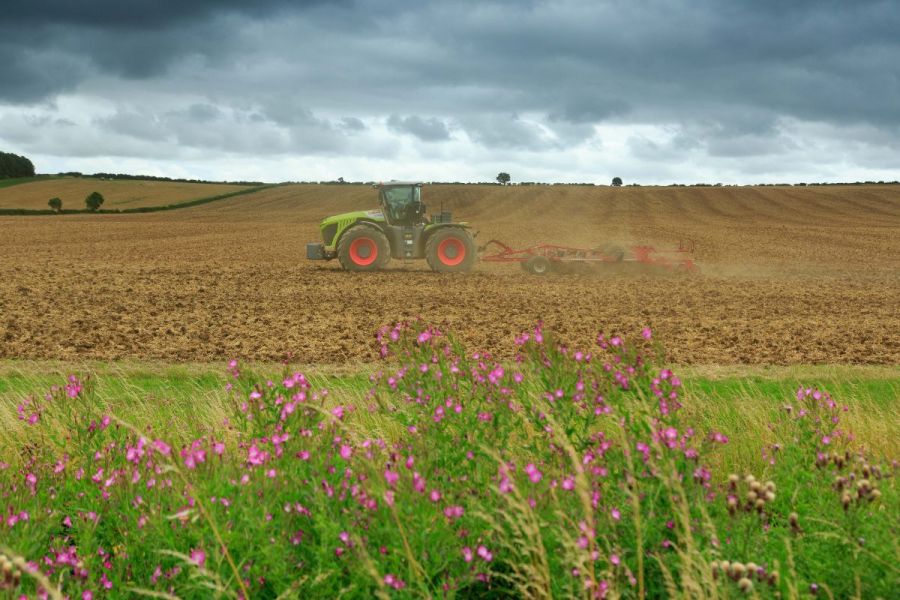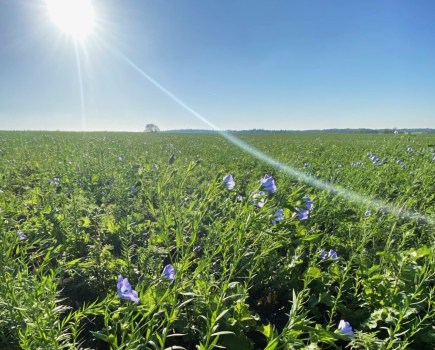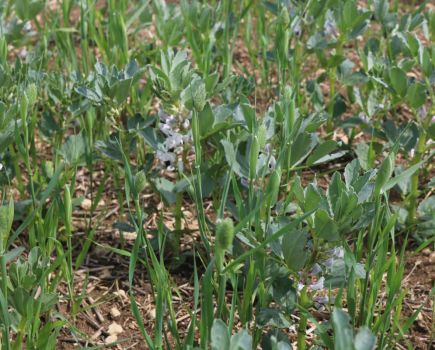With SFI hot in the headlines once again, CPM explores how growers intend to use the scheme and whether or not it offers real value and opportunities for farmers.
By Charlotte Cunningham
Since the announcement of the launch of the Sustainable Farm Incentive (SFI), views have been mixed to say the least.
While some feel it doesn’t go far enough to plug the financial gap created through the phasing out of BPS, others are more interested in its green credentials – its intended purpose – with the scheme designed to pay farmers to adopt and maintain sustainable farming practices that can protect and improve the environment.
Of course, farmers are no strangers to environmental-based schemes, with a recent survey conducted by CPM and Hutchinsons revealing that 58% of growers have been a part of the Countryside Stewardship Scheme (including mid-tier) over the past 10 years, 44% in Entry Level Stewardship and 22% in Higher Level Stewardship schemes.
More recently, over half of growers surveyed (53%) have also engaged with the new SFI. “Though we’ve seen a lot of change recently, the main offer on farm for the past almost 10 years has been Countryside Stewardship, which was launched in 2015,” says Georgina Wallis, head of environmental services at Hutchinsons. “At the time of the launch, the scheme itself wasn’t great, which put a lot of farmers off. The application window was through harvest and the process itself was quite drawn out and long, meaning a lot of hand-holding was required between farmers and advisors.
“But something I keep trying to reiterate to farmers now, is that because of all the lessons learnt with schemes like Countryside Stewardship, we’re at a point now with SFI that although it’s not perfect – it’s going to have snags – it works really well on farm and there’s something in there for most people. It’s much more flexible and adaptable than we’ve previously had.”
This is a critical point, as for any new scheme to be successful in its uptake it has to be workable and practical on farm, adds Georgina.
Almost half, 42%, of growers said they believe SFI integrates very well with current farm practices, and among those growers is Shropshire farmer John Edwards. Farming 100ha near Shrewsbury, John operates a mixed farm comprising arable and sheep enterprises and was part of the original soil standards pilot in 2022, as well as previously being part of various stewardship schemes, including Countryside Stewardship.
With the help of his agronomist, Ed Porter, John has now entered into an SFI agreement which consists of the following actions:
- SAM 1: Assess soil, produce a soil management plan and test soil organic matter
- SAM2: Multi-species winter cover crops
- SAM3: Herbal leys
- IPM1: Assess integrated pest management and produce a plan
- NUM1: Assess nutrient management and produce a review report
- NUM3: Legume fallow
- AHL2: Winter bird food on arable and horticultural land
- HRW1: Assess and record hedgerow condition
- HRW2: Manage hedgerows
- HRW3: Maintain or establish hedgerow trees
As well as helping to improve soil and the wider environment, NUM3 is being used to replace oilseed rape, highlighting the breadth of potential in the scheme, he says. “Countryside Stewardship ended up being a bit disappointing and being a part of BPS was vital financially – particularly at this time of year. With the SFI, there’s an opportunity to replace some of this lost income, but also potentially improve our soils and cropping, as well as the wider environment. I think it’s actually going to be even better than what we’ve had before – it’s quite a refreshing alternative.”
Andrew Hardcastle, director of Hardcastle Rural Surveyors, echoes John’s sentiments and says there’s real opportunity within the SFI. “It can work for most farmers, and there are varying levels of funding depending on how far a farmer wants to go into it.”
Delving deeper into the workings of SFI, the majority of growers (a total of 94%) said they understand the current SFI offer, but their objectives for involvement vary greatly.
A total of 88% of respondents said they’re looking for something that replaces lost BPS payments, while 69% said their concerns are with future-proofing the farm business. More than half of growers noted improving nature as a key objective, and 51% said they’re looking to de-risk new sustainable farming practices.
Although replacing BPS isn’t the intention of the scheme, Andrew says the financial incentive has certainly helped pique interest from growers. “I’m too finding that most farmers are seeking to replace BPS in some form, but in order to get to that level, they’ll have to take significant areas out of production. Most people aren’t going down that route though, and instead see it more as a risk management tool.
“We’re in a time of great uncertainty with farm funding – BPS is disappearing really quickly and it’s beginning to hit home. But what we’re finding with SFI is that it’s a useful tool for providing income and improving efficiencies on farm.”
John adds that it’s a ‘relief’ to still be receiving a financial incentive with the loss of BPS. “A lot of the measures I was doing under BPS I’ll be doing now under SFI, so although it’s not the intention of the scheme, it’s really helpful as a business to still be paid for that. The fact a lot of the measures will help improve our soils is a bonus, and obviously important for the longevity of the business and crops in the future.
“Where I see the opportunity is with the unproductive parts of our fields – which most farms have. What I’ll get for putting these areas into an SFI action is much more than I’d ever get with wheat, for example.
“What’s more, I’m on my own on the farm, so I can afford to do less arable-wise and put things like the legume fallows in. The payment almost makes up the difference for all the cost and labour involved. Even if I end up being slightly worse off for it, there’s value in the fact that I haven’t had the labour requirement a traditional crop would have.”
When looking at the offer and the individual actions on farm, Georgina says there are some key points to consider which are different to previous schemes. “Firstly, we have a real pick and mix approach now so growers don’t have to apply for one option to get another – you can go with as little or as much as you want. This is obviously with the exception of the recently announced caps, but essentially the scheme can be built around the individual farm.”
Another key difference is quarterly payments, she adds. “Again, in previous schemes, payments were made to agreement holders on an annual basis. But SFI sees this become quarterly which helps enormously with cashflow and offers a bit more of an incentive to engage with the scheme.
“Agreements are also much shorter. Rather than being 5-10 years, SFI is based on three years which again offers flexibility to growers. Application windows are open all year round and the turnaround time of the applications are a lot quicker than in previous schemes.”
Though the scheme definitely offers flexibility, Andrew says that one of the biggest issues with it at present is the constant changes. “We had a lot of farmers who entered into SFI ‘22 and I went around in the spring last year and drew up all the plans for them. Then without warning, Defra scrapped it. If they want the scheme to have maximum uptake, this has to change.”
Outside of SFI, John – like many of the respondents – will be continuing with other environmental measures such as grass buffer strips, infrequent hedge cutting and uncropped field corners.
“A lot of these actions aren’t included in schemes or aren’t worth claiming for, but I think many farmers see themselves as custodians of the countryside and are therefore minded to look after it,” says Andrew.
For those potentially interested in SFI but aren’t sure where to start, 61% of growers said their agronomist was the best place to look to for advice. “My agronomist, Ed, has been fundamental in getting this off the ground – he advised what measures would be best and what parts of the farm would suit different actions,” says John. “I can’t praise him enough – it just takes the stress off me when I’m focused on the farm.
As well as an agronomist, Andrew says it’s worth consulting a variety of experts as all will be specialists in different aspects of the application process. “Take advice from a range of people. As a land agent, while I could fill in forms and advise what might work, a seed merchant will be able to advise on specifics like the best mixes for specific actions, for example.”
Of course, the overriding question to all of this is does SFI truly offer an opportunity for farms to be more sustainable in the future? Almost half (48%) of growers say yes.
“We started with SFI last year and heading into our second year I’m really excited about it – I think there’s huge potential and opportunity,” says John.
Georgina concludes: “SFI marks the start of a new era for stewardship schemes on farm. A lot of the options offer payment for things farmers are already doing and SFI now also offers actions that weren’t previously available in agri-environment schemes which are really supportive of productive, sustainable farming.”
This article was taken from the latest issue of CPM. Read the article in full here.
For more articles like this, subscribe here.
Sign up for Crop Production Magazine’s FREE e-newsletter here.




